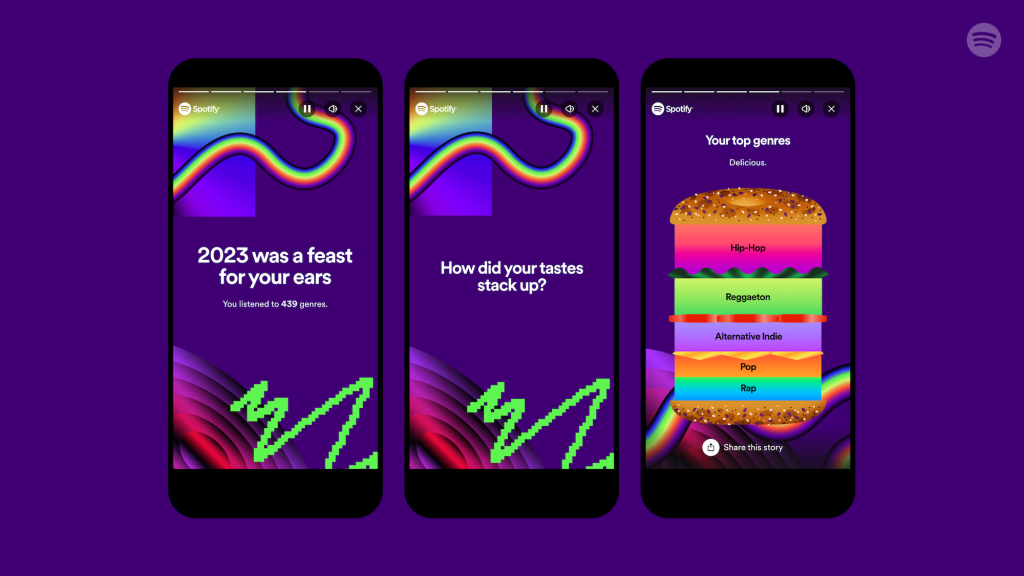Netflix, Airbnb, Amazon, Google, Facebook, Uber… All these brands are household names because they are innovative, disruptive businesses. For example, thanks to Uber, I haven’t had to raise my hand to hail a cab in years. Airbnb turned the average apartment into hotel inventory. Netflix started cable cutting and the streaming wars. With attention in short supply, how do we create our own disruptive approach to building successful businesses?

Defining disruptive businesses
First, let’s define disruption. Disruption is the process by which a smaller company moves upmarket and challenges larger, established businesses. Low-end disruption and new-market disruption are type of disruptive innovation. Consequently, the concept is super nuanced even though we apply the term quite broadly.
Luckily, businesses can take advantage of disruptive marketing even if they aren’t creative disruptive innovations. Disruptive marketing is about thinking differently. It’s about pushing past risk aversion to challenge conventional thinking and redefine the conversation. Arguably, tapping into this form of marketing can increase the probability of category success. Don’t take my word for it. Look no further than Liquid Death.
In Disruptive Marketing and Disruptive Brands: Successfully Challenging the Status Quo, Ross Miles shares there are typically two approaches for disruptive marketing:
- Novelty – A customer’s need is satisfied is a new way – i.e. iPods/Uber/Airbnb.
- Adaption – Re-imagination of a product or service so it is better/faster/cheaper i.e. Amazon.
Ultimately, it is much easier to craft disruptive marketing campaigns for innovative products. Either way, our goal is cut through the noise, and drive attention our direction.
Examples of disruptive marketing campaigns
Spotify is a perfect example. I bet you already know what I’m talking about. ‘Wrapped’ is a disruptive marketing campaign with a gigantic flywheel effect. Each year, Spotify presents its users with their own listening data gift wrapped in a highly designed package. In fact, by injecting personality and humor, Spotify has created a campaign that’s now anticipated each year.
Surprise and delight is at the core of this campaign. Specifically, Spotify’s ability to spark conversation that’s easily shareable letting their customers do all the promotion organically.

Another example or disruptive marketing is Oatly’s “Wow No Cow” campaign. The brand enlisted amazing artists and content creators to reimagine their anthem. They created an album, and even dropped a limited edition 7″ vinyl out of their favorite versions. Letting creatives do what they do best can lead to amazing results.
What’s truly smart about this campaign is the scope of the collaboration. Oatly was able to tap into internet culture and artist communities. As a result, they expanded their reach into subcultures in a fun and expressive way.
Adapting disruptive marketing for early stage disruptive businesses
Small, disruptive businesses and startups have a unique opportunity to tap into disruptive marketing. Unlike big brands and established players, startups can take more risks freely. Given lower budgets and resources, startups need to be creative and thoughtful in their approach.
Disruptive content
Content is king. First, remember your goal isn’t solely focused on creating content better than the competition. Undoubtedly, you’ll get more bang for your buck by competing for attention. Create quality content that’s disruptive by thinking about what will stop someone in their tracks. Scroll stoppers…
- Thought leadership. Though slightly cringe, some disruptive businesses multiply their email lists and sales calls using thought leadership. You can provide value. Importantly, you can also shake up the conversation. For instance, I write about the racial disparities across the marketing industry. It was one of my best performing articles on Linkedin.
- Social media. Algorithms change daily but people still want to be entertained. Tell compelling stories. Create imaginative mini-commercials with phone. Be funny or share something incredibly interesting. Consider which platforms are best for your business. Most businesses focus on Instagram and TikTok. Try YouTube instead.
- Be real. Wherever you go, be authentic. Call out your industry for ridiculous practices. Be radically transparent. Challenge perspectives by sharing your own. Build a community instead of followers. Share your failures, not just your wins.
- Supplement with paid. Lean in when you stumble across a winning piece of content. Repurpose the content on other platforms. Create an email campaign. Boost its visibility by turning it into an ad. To clarify, you don’t need to spend a lot of money.
Disruptive tactics
Marketing strategies are a dime a dozen. The tools get better and easier to use. Depending on your industry or business model, certain strategies will be more effective than others. Disruptive marketing is more about the approach than the tactic itself. Here are some examples of reimagining some common marketing strategies.

- Hype selling. Streetwear, sneakers, a fashion collaborations often get a ton of press. People stand in line for hours. Bots are built to buy product releases before the average customer can click checkout. Can you apply this tactic in a place that’s unexpected? At El Camino, we succeeded in selling out group trips priced above $3,000 in less than 24 hours. We coined it a “trip drop.”
- Partnerships. Businesses love partnerships because there’s an exchange of value. It’s easy to set your sights on partnering with big brands. We want the caché, awareness, and brand alignment. Consider targeting business partners more strategic and local. Can you connect with clubs and organizations? Bradley Gifford of Spoonful does a great job connecting with his local sports community, sharing his product organically without having to rely on direct selling.
- Cold emailing. Cold emailing can be huge for many disruptives businesses. It takes thoughtful research and targeting plus great writing. I started my entire photography business from cold emails. The standardized approach is to draft a personalized email introducing your business and why it’s a good fit. Test out things like providing value immediately. For example, do you have a white paper or resource unique to your customers’ needs? Skip ahead and send it first before asking for something in return.
Disruptive marketing is growth marketing
Marketing magic bullets don’t exist. You can copy and paste the competition, or you can be disruptive and chart your own path. The more clear and differentiated your business, the easier it is to create truly disruptive marketing approaches. Regardless, all businesses can tap into the creativity of non-endemic approaches to strategies and tactics. Without a doubt, disruptive marketing is growth marketing. Whether you’re building a small lifestyle brand or scaling game-changing disruptive businesses, standing out is the key to awareness.
